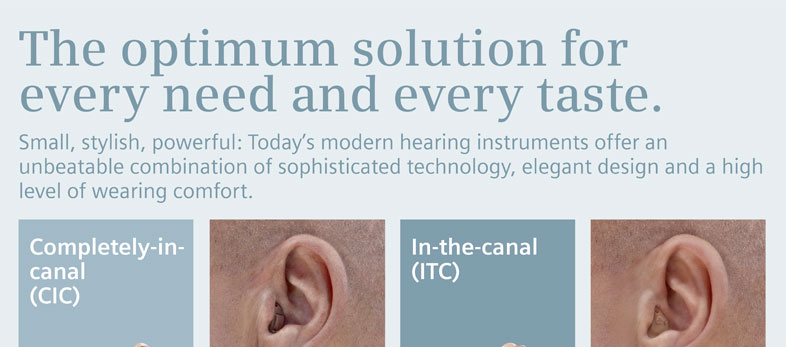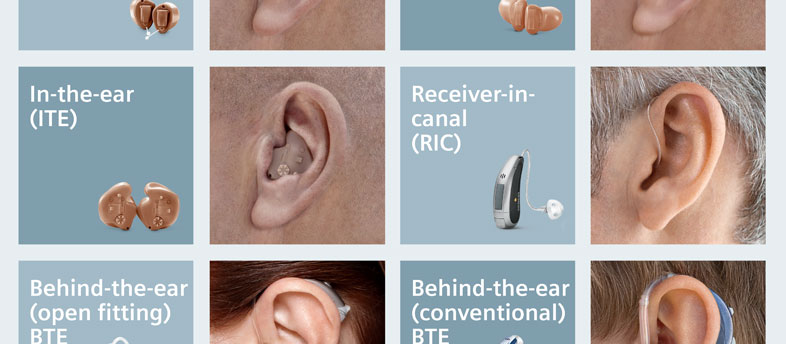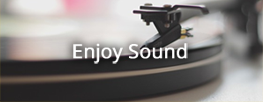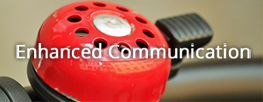It is important to remember that hearing loss is a health care problem. Furthermore, hearing loss is a physical health problem, not a mental health problem. Most often a hearing loss is gradual and painless, in many cases developing so slowly it is barely noticeable. At any age, hearing can be damaged by:
- Middle ear infection
- Exposure to loud or constant noise
- Heredity
- Illness or birth defects
- The natural aging process
- Traumatic injury
- Ototoxic medications
- Tumors
Recognizing a hearing loss in yourself or someone you know is the first step toward improving the situation. Often, among the first sounds which “disappear” are those in the higher frequencies, that is, those which are most high-pitched. From the listener’s point of view these sounds include:
- Women’s and children’s voices
- Bird’s singing
Other symptoms of hearing loss include:
- Difficulty hearing in public gatherings – concert halls, theaters, house of worship – where sound sources are far from the listener.
- Difficulty hearing television and/or on the telephone.
- Difficulty understanding conversation within a group of people.
- Adults avoiding group meetings, social occasions, or family gatherings where listening may be difficult or where one may feel embarrassed about misunderstanding what is being said.
Individuals affected by hearing impairment often develop methods for coping with difficult listening situations. These actions include:
- Asking others to repeat themselves.
- Turning the head to one side while listening to sounds or speakers.
- Turning up volume levels on TV, radio or stereo.
- Avoiding social gatherings.
- Misinterpreting a spoken message.
Your ability to hear is as unique as your fingerprint. No two people have exactly the same hearing impairment. Work-place noise, inherited medical conditions, childhood and adult illness all combine to produce different types of hearing loss in different people.
There are three types of hearing loss:
- Conductive hearing loss, produced by injury to, or problems with, the bones, eardrum and membranes which carry sound from the external ear through the middle ear to the inner ear.
- Sensorineural hearing loss (also know as nerve deafness), one in which all the mechanisms listed above are intact but a deterioration of the inner ear is present. This may be caused by the natural aging process, or degeneration of the nerves leading from the inner ear to the brain.
- Mixed hearing loss, one which contains elements from both conductive and sensorineural hearing loss.
ITC and ITE instruments are self-contained – a microphone, amplifier and speaker inside the instrument carry amplified sound directly to the ear canal and auditory system.
BTE instruments also contain a microphone, amplifier and speaker but send amplified sound signals to an earmold worn inside the ear. The earmold then carries the amplified sound to the eardrum.
Most hearing aids have an adjustable volume control and are powered by small replaceable batteries.
Selection of the correct hearing aid should be made only by a hearing health care professional. Once an aid has been selected, the hearing health care professional can review the audiometric evaluation information and make any final adjustment of the aid’s controls to suit your particular need.
The need for one or two aids is also determined by the hearing health care professional. If a hearing loss occurs in both ears, the hearing health care professional will consider whether binaural (two hearing aids) will be beneficial.
For people with hearing loss in both ears, wearing two aids improves the ability to participate in conversation, understand in situations with background noise, and hear a more natural balance of sound.
 The ear is an amazing and incredibly skilled organ that performs the wonderful and highly complex task of hearing. It can distinguish between 7,000 different pitches and enables the brain to locate sound sources.
The ear is an amazing and incredibly skilled organ that performs the wonderful and highly complex task of hearing. It can distinguish between 7,000 different pitches and enables the brain to locate sound sources.
- Outer ear:
The outer ear picks up sound and transmits it to the eardrum via the ear canal.
- Middle ear:
The sound makes the eardrum vibrate and is amplified by the ossicles (three tiny bones Malleus, Incus, Stapes).
- Inner ear:
The cochlea converts movements of the ossicles into electrical signals, The auditory nerve transmits the signals t the brain.
Improve your hearing and quality of life with the different types of Siemens hearing instruments. www.siemens.com.sg/hearing
-
 Understanding family, friends and relatives
Understanding family, friends and relatives
- Improved conversations within the family
- Hearing conversations without straining, even in noisy environments.
- Improved understanding of speech.
- Improved awareness of surrounding sounds and voices.
- Hearing more clearly on the telephone.
- Alleviating feelings of isolation, depression and anxiety.
- Increase in social activities.
- Greater independence and security.
The following suggestions may be useful:
- Begin by wearing your hearing instruments for 1 to 2 hours at a time in quiet and familiar surroundings. This will help you to adjust to everyday sounds, especially your own voice.
- When you are familiar with the usual sounds, you can start wearing your hearing instrument in more challenging environments.
- As you get more comfortable, gradually increase the time you wear your hearing instrument, Expand your wearing time until you are wearing them all day, everyday.
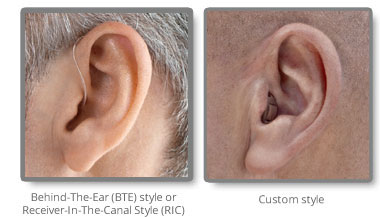 Many factors have to be taken into account. There is no "one size fits all" answer to hearing loss; each solution is as unique as the individual.
Many factors have to be taken into account. There is no "one size fits all" answer to hearing loss; each solution is as unique as the individual.
Yet there are three main categories that influence the choice: Ear anatomy, degree of hearing loss and personal lifestyle. Hearing instruments today offer many options for a perfect fit and improved quality of life.
For example, BTE or RIC styles can be worn behind the ear for powerful sound and a comfortable fit. custom styles are tailor-made to perfectly and discreetly fit in the ear canal. Your Hearing Care Professional will be glad to help you find the solution that best fits your needs.



